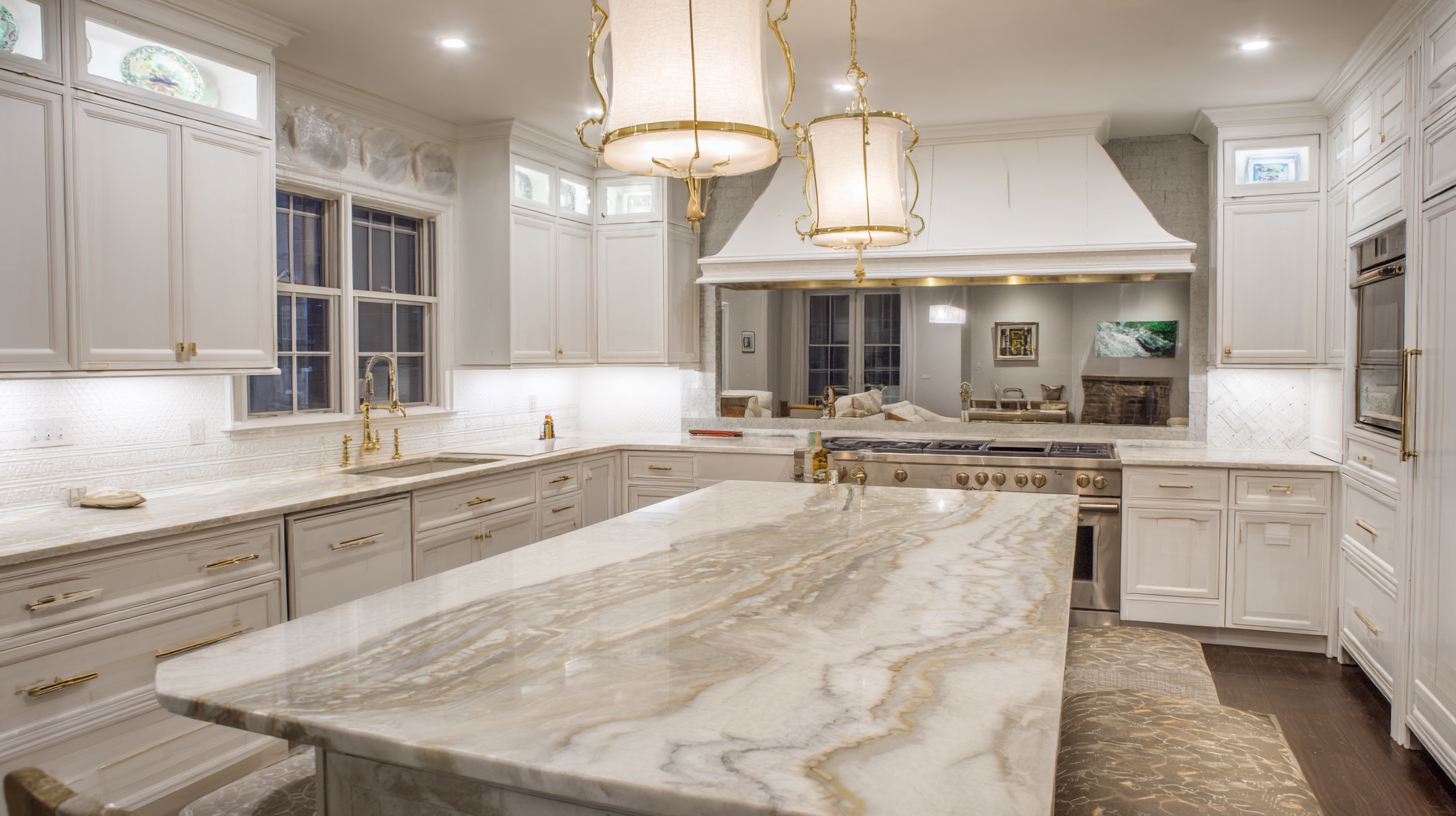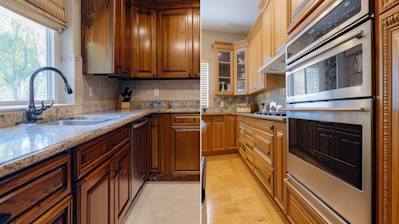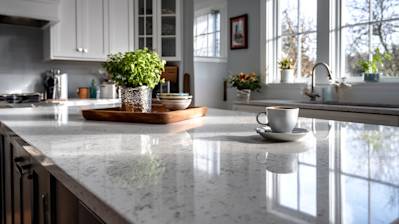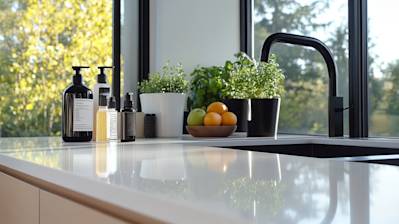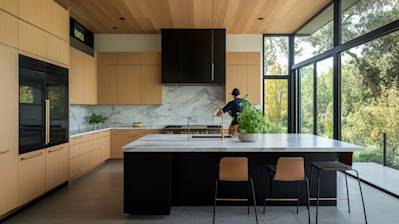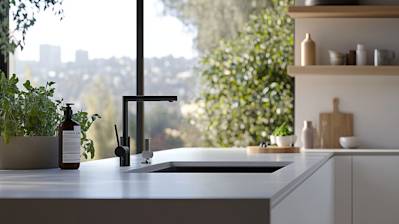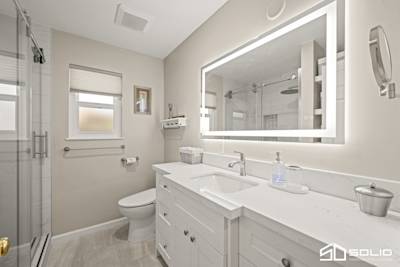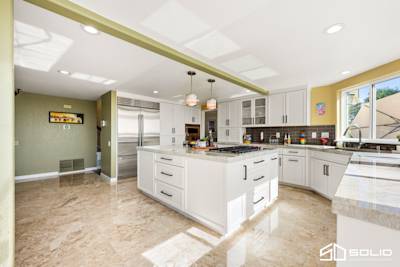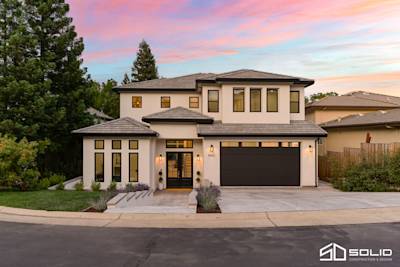Taj Mahal Quartzite is a spectacular natural stone that stands out for its beauty and functionality. Known for its striking resemblance to marble, this quartzite offers the perfect combination of elegance and durability, making it a favored choice among homeowners and designers alike. In this article, we explore the many facets of Taj Mahal Quartzite, its unique characteristics, and why it has become a popular option in home decor.
What is Taj Mahal Quartzite?
Taj Mahal Quartzite is a natural stone quarried primarily in Brazil. Its name draws inspiration from the iconic Taj Mahal in India, known for its timeless beauty and grandeur. However, unlike marble, which is a metamorphic rock, Taj Mahal Quartzite is a type of sandstone that has been deeply compressed and heated, resulting in its dense and durable structure.
Unveiling the Aesthetic Appeal
One of the most alluring aspects of Taj Mahal Quartzite is its stunning appearance. The stone features a soft, creamy base, often enhanced with subtle veining in hues of gold, brown, and gray. This delicate yet intricate pattern offers a sophisticated look that suits various design styles, from traditional to contemporary.
The Marble Look Without the Hassle
Many homeowners dream of having marble countertops or flooring, but they often shy away due to concerns about maintenance. Taj Mahal Quartzite provides the same luxurious appearance as marble, minus the hassle. It is more resistant to scratches, stains, and etching, making it an excellent choice for high-traffic areas like kitchens and bathrooms.
Key Benefits of Taj Mahal Quartzite
Taj Mahal Quartzite is prized not only for its beauty but also for its impressive durability and ease of maintenance. Here are some key benefits of incorporating this stone into your home:
- Durability: Its dense composition means it is less prone to chipping and scratching, making it suitable for busy households.
- Low Maintenance: Unlike marble, Taj Mahal Quartzite does not require regular sealing, making it easier to maintain.
- Heat Resistance: Ideal for kitchen countertops, this stone can withstand high temperatures from pots and pans.
- Versatility: Its neutral tones and unique patterns make it an adaptable choice for various rooms and design styles.
Applications in Home Design
Taj Mahal Quartzite's versatile nature means it can be used in an array of applications within the home, making it a versatile and practical choice.
Kitchen Countertops: Form Meets Function
The kitchen is the heart of the home, where durability meets beauty. Taj Mahal Quartzite is a fantastic option for countertops due to its resistance to heat and scratches. Its ability to handle daily kitchen activities without losing its luster makes it a go-to for families who want functionality without compromising on style.
Luxurious Bathroom Surfaces
Bathrooms can benefit immensely from the natural elegance of Taj Mahal Quartzite. Whether used for countertops, vanities, or shower walls, this stone enhances the spa-like atmosphere with its calming hues and flowing patterns.
Floor and Wall Applications
For those seeking a cohesive and elegant look throughout their homes, Taj Mahal Quartzite can also be used for flooring and wall features. Its robust nature makes it suitable for high-traffic areas, while its aesthetic adds visual interest to any space.
Integrating Taj Mahal Quartzite with Different Styles
Modern Minimalism
The understated elegance of Taj Mahal Quartzite complements modern and minimalist designs. Its neutral color palette acts as a canvas, allowing other design elements to shine.
Classic and Traditional
Its marble-like appearance effortlessly aligns with classic and traditional styles, adding an element of grandeur and timeless beauty.
How to Care for Taj Mahal Quartzite
Maintaining the pristine condition of Taj Mahal Quartzite is relatively straightforward, thanks to its durable properties. Here are some simple care tips:
- Regular Cleaning: Wipe surfaces with a soft cloth and mild detergent or stone cleaner.
- Avoid Harsh Chemicals: Do not use acidic or abrasive cleaners that could damage the surface.
- Immediate Clean-up: Address spills promptly to prevent temporary staining, particularly from darker liquids.
- Non-Porous Sealing: Although not as porous as marble, periodic sealing can help maintain its optimal appearance and protection.
Frequently Asked Questions about Taj Mahal Quartzite
Is Taj Mahal Quartzite suitable for kitchen countertops?
Yes, Taj Mahal Quartzite is highly suitable for kitchen countertops. Its robust nature makes it resistant to heat, scratching, and etching, common concerns in a kitchen environment. Additionally, the subtle veining of Taj Mahal Quartzite can hide minor stains or blemishes that might occur with everyday use. It’s important, however, to properly seal the surface to enhance its natural resistance to moisture and staining, ensuring that the countertops remain pristine for years to come.
Can Taj Mahal Quartzite be used for outdoor applications?
Absolutely, Taj Mahal Quartzite is a fantastic choice for outdoor applications. Its natural durability makes it an excellent material for outdoor kitchens, patio areas, and pool surrounds. Unlike some stone materials that may fade or deteriorate over time due to exposure to the elements, Taj Mahal Quartzite is highly resistant to UV rays and extreme weather conditions. This ensures that it maintains its beauty, even when used in outdoor environments.
How should I care for and maintain Taj Mahal Quartzite surfaces?
Maintaining Taj Mahal Quartzite is relatively straightforward, requiring regular cleaning with mild soap and water. Avoid abrasive cleaners or pads, as these can dull the surface. A key part of maintenance is sealing the Taj Mahal Quartzite periodically to protect against potential staining. Depending on the usage and the specifics of the installation, resealing might be necessary every six months to two years. This ensures the quartzite remains as stunning as the day it was installed.
Does Taj Mahal Quartzite stain easily?
Taj Mahal Quartzite is more resistant to staining than some other natural stones, but it is not impervious. Due to its natural porosity, it can absorb liquids if not properly sealed. To prevent potential stains, promptly wipe up any spills, especially those from substances like coffee, red wine, or oil, which are known to stain. Regular sealing acts as a barrier, reducing the stone's porosity and enhancing its stain resistance.
What are the common finishes available for Taj Mahal Quartzite?
Taj Mahal Quartzite comes in several attractive finishes that each offer a different aesthetic. The most common is the polished finish, which provides a smooth, glossy surface that enhances the stone's natural veining and colors. A honed finish offers a matte appearance, which is ideal for those seeking a more understated look. While less common, a leathered finish can add texture and character, providing a slightly rugged texture while maintaining the stone's elegance.
How does the cost of Taj Mahal Quartzite compare to other materials?
Taj Mahal Quartzite is considered a premium natural stone, which is reflected in its price. Generally, it is more expensive than granite but less costly than rare marble varieties like Calacatta. The exact cost can vary depending on several factors, including slab size, thickness, and the region from which it is sourced. While the initial investment may be higher, many homeowners find the unique beauty and durability of Taj Mahal Quartzite well worth the cost.
Can Taj Mahal Quartzite be repaired if it gets chipped or cracked?
If Taj Mahal Quartzite becomes chipped or cracked, it can often be repaired by a professional stone restorer. Small chips can typically be filled and color-matched using special epoxy, making them virtually invisible. For larger cracks, a more comprehensive approach may be required, potentially involving grinding and resurfacing. Regular maintenance can help prevent such damage, but knowing that repairs are possible can provide peace of mind for homeowners.
Is Taj Mahal Quartzite an environmentally friendly choice for home décor?
Taj Mahal Quartzite is considered a relatively environmentally friendly option for home décor compared to some other materials. Being a natural stone, it does not require extensive chemical processing, reducing its environmental impact. Additionally, due to its durability and timeless appeal, Taj Mahal Quartzite often has a longer lifespan in home applications, meaning less frequent replacement and reduced material waste. Selecting a local supplier can further reduce the carbon footprint associated with transporting this beautiful stone.
The Upsides and Downsides of Taj Mahal Quartzite
When you're considering countertops or other surfaces in your home, you might have the elegant and durable Taj Mahal Quartzite in mind. This stunning natural stone has become incredibly popular, and for good reason. But like every material, it comes with its own set of advantages and disadvantages. Let’s dive in and examine both sides of the coin.
Pros
Eye-Catching Beauty
One of the first things you'll notice about Taj Mahal Quartzite is its stunning beauty. It has an appearance that mimics marble with its rich veining and soft, creamy colors. Whether you’re aiming for an upscale modern look or a classic timeless style, this quartzite can seamlessly blend in.
Durability
Taj Mahal Quartzite is incredibly durable. It’s harder than granite, meaning it can withstand high traffic and constant use without showing wear and tear. For busy kitchens or areas where durability is crucial, this is a wonderful option. You won't have to worry about scratches or etching as much as you would with marble.
Heat Resistance
This natural stone is highly resistant to heat, so placing a hot pot or pan directly on the surface won’t cause damage. It’s an ideal choice for kitchen surfaces because it can handle the daily abuse that comes with cooking and food preparation.
Low Maintenance
Compared to other natural stones, Taj Mahal Quartzite is relatively low maintenance. It's less porous than marble, which means it doesn’t require as frequent sealing. A simple wipe with mild soap and water is often enough to keep it looking pristine.
Unique Patterns
Each slab of Taj Mahal Quartzite is unique, offering a range of patterns that provide a personal touch to your space. No two installations look exactly alike, allowing homeowners to enjoy truly one-of-a-kind aesthetics.
Cons
Cost
One of the main drawbacks of Taj Mahal Quartzite is the cost. It can be quite expensive, sometimes even rivaling the price of high-end marble or granite. If you’re working within a tight budget, this might be a factor to consider.
Installation Complexity
Because it is a dense and heavy stone, installing Taj Mahal Quartzite can be a challenging task. It requires skilled professionals to ensure proper handling and fitting. Any mistakes in measurement or placement can lead to costly waste.
Limited Color Options
While the natural beauty of Taj Mahal Quartzite is stunning, the palette is limited to neutral tones. If you’re in the market for vibrant colors or specific shades, you might find the options in quartzite to be somewhat lacking.
Potential for Chips
While it's more resistant to scratches, Taj Mahal Quartzite can still chip if hit with a heavy object in just the right way. This makes it slightly less forgiving than its counterparts like granite regarding accidental impacts.
Sealing Requirement
Although it is low maintenance compared to marble, Taj Mahal Quartzite still requires regular sealing to maintain its resistance to stains and liquids. Neglecting this can lead to potential staining from common kitchen substances like oils and wine.
Ultimately, while Taj Mahal Quartzite offers a luxurious and durable option for those looking to elevate their space, it's important to weigh these pros and cons based on your personal preferences and lifestyle needs. This helps ensure that you make the best choice for your home or project.

